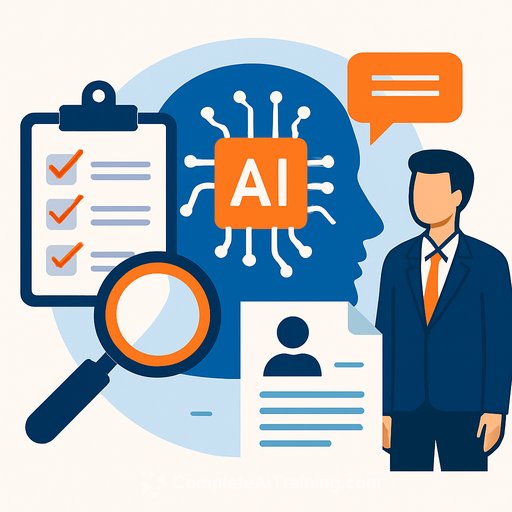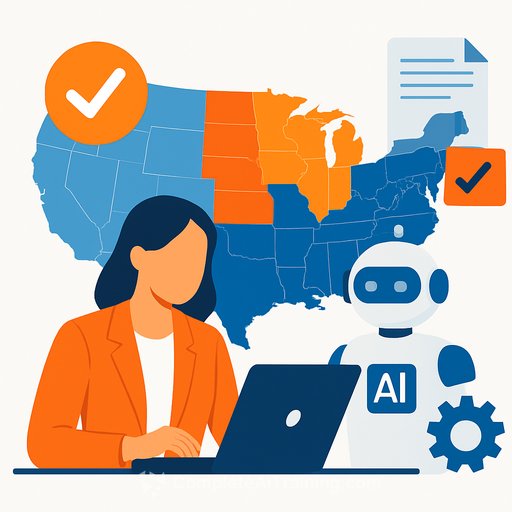ROI on AI tools: HR leaders aren't seeing the value
Adoption is up. ROI isn't. Most HR leaders say AI tools aren't delivering meaningful business value because employees don't know where AI fits in their day-to-day work.
Gartner reports that 88% of HR leaders aren't seeing the value they expected. While 65% of employees are excited to use AI, only 42% know how to spot the right use cases. As Benjamin Loring put it, "Employees struggle with AI's relevance to their work... Employees need guidance on how to apply AI to realise its benefits."
Permission to "explore" won't move the needle. Sam Wilde is blunt: "Empowering employees is not enough... HR needs to integrate AI into employees' work to drive the desired growth."
The core issue: AI sits outside the work
Most teams try AI in isolation, not inside real workflows. That's why enthusiasm doesn't convert to outcomes. Integration - not inspiration - is what creates value.
What HR should do right now
Evolve work, not the workforce. Redesign processes so AI is the standard way work gets done, not an optional add-on. Start where friction is visible and measurable.
- Map the work: Identify bottlenecks, handoffs, and rework. Target the steps with clear time or quality pain.
- Define outcomes: Pick 1-2 metrics per process (cycle time, error rate, throughput, satisfaction). Tie AI use to these targets.
- Embed AI into SOPs: Provide prompts, templates, and checklists inside the workflow. Make "with AI" the default path.
- Train in-context: Offer short, role-based practice sessions inside the tools people already use. Pair early adopters with peers.
- Partner with the CIO: Standardize tool access, data permissions, and risk controls. Build skills at scale with consistent patterns.
- Set governance: Define acceptable use, review checkpoints, and a simple process to approve new AI use cases.
High-impact HR use cases to start with
- Recruitment: Draft job ads with inclusive language, screen for basics, summarize resumes, and schedule faster.
- Onboarding: Generate role-specific onboarding plans, FAQs, and policy summaries; create checklists from SOPs.
- L&D: Turn SMEs' notes into microlearning, quizzes, and practice tasks; personalize learning paths by role.
- HR Ops: Triage tickets, auto-summarize cases, generate knowledge base articles, and draft routine communications.
- Employee relations: Summarize interviews, structure investigations, and standardize documentation with consistent tone.
- People analytics: Automate data pulls, create first-draft analyses, and generate slide-ready insights with source notes.
Make saved time count
Gartner found 62% of employees are saving time with AI. In AI-relevant roles, the average is 1.5 hours per day.
The trap: unstructured free time gets lost to low-value tasks. Set rules for reclaimed time and make the expectation explicit.
- Reinvest hours into: customer-impacting work, process improvements, and skills development tied to future needs.
- Team agreements: e.g., "30% of saved time goes to high-value projects, 20% to skill growth, rest to backlog reduction."
- Manager cadence: Review where time went and what outcomes moved. Adjust weekly.
Prove ROI with simple, visible metrics
- Adoption: % of target roles using AI weekly, by process.
- Throughput & cycle time: Tasks completed and time per task before vs. after.
- Quality: Error/rewrites, candidate quality, ticket reopen rates.
- Time saved (validated): Short time studies, not self-reported guesses.
- Experience: Employee and hiring manager satisfaction scores.
- Financial impact: Cost per hire, training production cost, case handling cost. Use small A/B pilots to isolate effects.
30-day integration plan
- Week 1: Pick two processes with clear pain. Baseline current metrics. Form a small cross-functional squad (HR, Ops, IT).
- Week 2: Redesign the workflow with AI steps. Write SOPs, prompts, and guardrails. Configure access and data controls.
- Week 3: Train in the flow of work using real tasks. Set the rule for reinvesting saved time. Start the pilot.
- Week 4: Measure outcomes, gather feedback, refine prompts and steps. Decide to scale or iterate.
Key takeaways
- Excitement doesn't pay the bills; integration does.
- Don't "empower" - operationalize. Put AI inside SOPs and tools.
- Guide reclaimed time toward growth and skill building.
- Measure a few outcomes that leaders care about and report weekly.
For original insights, see Gartner's analysis and conference materials here.
If you're building capability at scale, explore role-based AI learning paths and certifications: Courses by job and popular certifications.
Your membership also unlocks:






